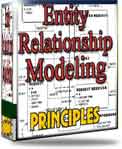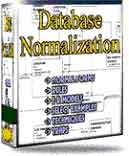 |
||
|
|
Project Management Success - Managing stakeholdersI. Project Management Success - BackgroundProject managers are first and foremost people managers. The moment the reins of a project are handed to them, they also inherit a set of people around the project. This is the set of people who have a direct or indirect stake in the project. Since these stakeholders can make or break the direction and outcome of the project, managing them has to be a priority for every manager worth their salt and secure Project Management Success. We will not use the term - “manipulating stakeholders” here (though the line is very thin); we shall focus on “managing stakeholders” for the sake of Project Management Success. II. Stakeholder identification, level of influence, and managementIt is quite possible to put stakeholders into different compartments. There are some people whose opinions can sway the entire team’s attitude and approach towards the work in hand. There are others who, though very crucial to the project’s success, are not vocal about their opinions. There are yet others who exert considerable power over resource mobilization, and one signal of their little finger can move a lot of capital and/or manpower and/or infrastructure towards the direction of your project. Stakeholders are usually one or all of the following:
After this list is ready, the next step is to prioritize them in a power/interest grid to secure Project Management Success. This grid would typically have interest on the x-(horizontal) axis and power on the y-(vertical) axis. There could be four quadrants - Low power/low interest, High power/low interest, High power/low interest, and High power/high interest. One’s strategy of managing a stakeholder can be appropriately contoured based on their position in these quadrants. For example, the ones that have low interest in the project, but have high power, may be kept in good humor at all times. It is essential not to be on their wrong side. The ones that have a high power and a very high interest - such as the command chain starting from the top CEO to one’s immediate boss - have to be fully engaged and all one’s efforts have to be expended towards satisfying them. They are crucial to Project Management Success. The third quadrant comprising people with low power, but with a high degree of interest, include one’s team members, peers, and coworkers, and also perhaps research analysts, the media and shareholders, in case the project happens to be high-profile. Such people require continuous updation of the progress of work, and a general feel-good message at all times. Finally, the quadrant comprising low power and low interest stakeholders is perhaps people like one’s family. Though they do not have any interest whatsoever in the goings-on (nor do they have any influence on its outcome), yet, communication with them should not be ignored. III. Changing stakeholder dynamicsAt any point of time, any stakeholder from amongst any of the quadrants may be in any state of mind vis-à-vis the project - and this keeps changing dynamically with time:
The desired support levels may again be high, medium or low. Most of the time project managers perform the assessment of their perception of each stakeholder’s status and desired support levels in their mind. It would be prudent however, to put all this information in an appropriately tabular form on paper, neatly folded in a secret pocket somewhere. This paper may be continuously updated as time goes by. Actions that need to be performed to reverse any negative status positions may also be noted down on the same paper. This approach gives a professional spin to the concept of stakeholder management as a whole. Depending on the circumstances, winning over or neutralizing the opposition of skeptics might take a lot of one’s productive time - both at office and outside. While planning one’s actions, the one fact that may be borne in mind is the domino or ripple effect that action intended on one stakeholder might have on the others. For example, a hastily-called press conference to appease some high-power stakeholder might irk your immediate boss whom you forgot to consult beforehand. IV. Project Management Success - End wordThe best part of stakeholder management is that as a project manager, you begin to look at the whole job through the eyes of others, and your vision is not claustrophobic or narrowed to yourself. Technical competence is a must, no doubt. But people savvy is what wins brownie points, as well as more lucrative projects in the future. Return to Software Project Management
|
Exclusive interviews with:
Free eBookSubscribe to my newsletter and get my ebook on Entity Relationship Modeling Principles as a free gift: What visitors say...
"I just stumbled accross your site looking for some normalization theory and I have to say it is fantastic.
Read more
Testimonials
I have been in the database field for 10+ years and I have never before come across such a useful site. Thank you for taking the time to put this site together." Mike, USA |
|
Theory & Practice DB Normalization Analysis Phase Database Keys DB Glossary Appl.Architecture Oracle DBA MySQL DBA SQL Server DBA Install Oracle Install SQL Server Proj.Management Oracle Constraint Programming Tips Database Normalization eBook: http://www.liverdoctor.com/ |
||
|
Copyright © www.databasedesign-resource.com /
All rights reserved. All information contained on this website is for informational purposes only. Disclaimer: www.databasedesign-resource.com does not warrant any company, product, service or any content contained herein. Return to top
The name Oracle is a trademark of Oracle Corporation. |
||